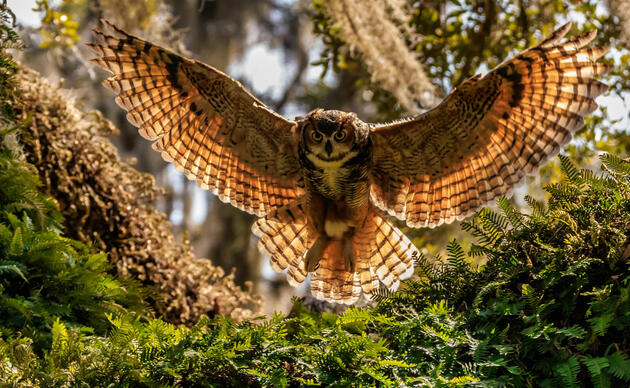This article was first published in the Post and Courier.
Memorial Day weekend heralds the traditional start of the summer tourism season on beaches along the South Carolina coast, but it also presents perils for some creatures enjoying the sand: shorebirds.
Visitors to the beach need to avoid disturbing bird nests as they visit over the holiday weekend and the rest of the summer, said Audubon South Carolina, a conservation group focused on protecting endangered and threatened bird species.
"Flushing" a nest, or causing the birds sitting on it to flee suddenly, can be perilous for unhatched eggs. Shorebirds typically lay eggs on the sand in between the high tide line and dune grasses.
"It really just takes a couple of minutes for parents being off of a nest for the sun to cook the eggs," said Nolan Schillerstrom, of Audubon.
If parents detect danger, their natural instinct is to fly at the threat and distract it from the nest itself, and sometimes that means being unable to return to the nest until it's too late, Schillerstrom said. They can detect a potential threat coming from a quarter to a half a mile away.
If the birds lay again, the size of the new nest usually isn't as big, Schillerstrom said.
Among the most at-risk of disruption on the beach are two species of shorebirds that nest on the South Carolina coast: the American Oystercatcher and the Wilson's Plover.
The Wilson's Plover, a small bird with a brown back, white breast and dark ring around its neck, is a state-recognized threatened species. It faces human disturbance at all stages of its life cycle, according to the American Bird Conservancy, and its range is contracting in part due to a loss of habitat.
The bird can be found along the Gulf Coast and southern Atlantic seaboard. The species no longer nests north of Virginia, even though the ornithologist it's named for, Andrew Wilson, originally found a specimen in Cape May, N.J.
Wilson's Plovers frequently nest near inlets, and there are about 375 nesting pairs in the state, according to the S.C. Department of Natural Resources.
The American Oystercatcher has a black head with a long, bright orange bill, and is roughly the size of a crow. True to its name, the bird uses its long beak to pry open bivalves.
The species is not recognized as threatened by the state or federal government, and its numbers have increased lately due to conservation programs, according to DNR. But it is still subject to habitat loss from coastal development and climate change.
About 400 pairs of the Oystercatcher nest in South Carolina, usually on mounds of empty oyster shells. In the winter, as many as 3,500 of the birds — a third of all the Oystercatchers on the Atlantic Coast — migrate to South Carolina.
Melissa Chaplin, an endangered species biologist with the U.S. Fish and Wildlife Service, said the Oystercatcher is particularly intolerant of humans or dogs nearby and will easily flee.
But thanks in part to programs that mark off potential nesting grounds with signs, shorebirds are starting to come back and nest in relatively busy areas of South Carolina's coast, Chaplin said. There's a pair of Oystercatchers nesting right now on the north end of Folly Island, the second year in a row that a pair has been spotted there, she said.
For the Red Knot, a small, brownish-red migratory bird that travels huge distances, human disruption on South Carolina beaches won't threaten a nest. But it's still a big problem.
The bird is considered a threatened species by the federal government because its habitat and migrations patterns are interrupted by coastal development and climate change.
Schillerstrom said, along some legs of the Red Knot's journey, it can fly for thousands of miles without stopping. It spends winter in South America and then flies all the way to the arctic tundra in the summer to breed. The birds that stop to rest and eat along South Carolina's shores don't have eggs to protect, but they have a long way to go, and often don't stop again before the arctic.
Disrupting the birds as they're eating or resting is like pulling a fire alarm in a restaurant full of starving people, Schillerstrom said.
"It’s not that big of a deal maybe if it just happens once, but for these birds, it's like somebody pulls the fire alarm every 10 minutes," he said.
To avoid disturbing shorebirds, Audubon South Carolina recommends:
- Keeping dogs leashed so that they can't chase the birds.
- Keeping the beach trash-free, because food and scraps can attract natural predators.
- Avoiding posted nesting areas.
- Teaching children to never chase birds on the beach.






